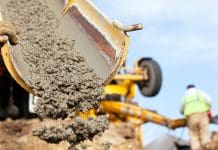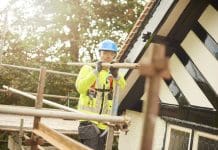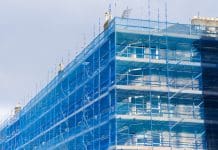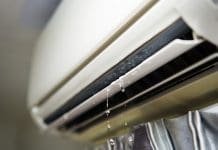In the second of a series of articles on the use of admixtures to waterproof concrete, James McDonald of Cementaid discusses the need for clear and robust specification
In January’s article, I discussed the problem of a lack of a definition for ‘waterproof concrete’ and the difficulty specifiers have in ensuring appropriate products are used as specified.
Adding such wording as “or similar” after specifying a product is simply too vague and asking for trouble when the contractor comes up with an alternative, eg ‘well they’re both admixtures!’ The terminology used must be robust, eg “or at least equal in performance as specified below and approved by the structural engineers in writing”.
Correct performance specification for the admixture concrete will help but may not always overcome the problem. It must firstly deal with legal and industry standard requirements, even though such do not ensure any form of quality or efficacy, and then deal with the real requirements. A suggestion is as follows:
- Complies with the requirements of BS EN 934-2: 2009 as a water resisting admixture under table 9.
- Holds a current British Board of Agrément certificate certifying the product’s use where it is specified.
- Demonstrate by independent testing that concrete containing the admixture shall have a corrected 30-minute water absorption of not greater than 1% (one) as measured by BS 1881-122: 2011 and when tested under BS EN 480-5:2005, shall have an absorption value of less than 25% of the control when cured for 90 days and tested for 28 days.
- Any admixture or ingredient used to comply with the absorption requirement must be shown by an independent authority to have been used in concrete exposed to a similar environment for a minimum of 25 years without significant deterioration of the cement matrix, embedded reinforcing steel or measurable reduction in the absorption performance of the concrete.
- The admixture supplier is to attend the concrete batching plant to ensure correct dosing of the admixture into the concrete and to attend site to record where the concrete is placed and the circumstances of the placement.
- The manufacturer of the waterproofing ingredient to provide a guarantee of not less than 12 years against the visible migration of water through properly compacted concrete containing the ingredient which has been placed in accordance with the manufacturer’s specification.
Point 1 deals with the legal requirement under EU regulations that any waterproofing admixture marketed in the EU must be CE marked and comply with the standard.
Point 2 is important as it at least means that an independent body has assessed the product. However, BBA certificates for waterproofing admixtures are now generally generic and as there is no definition of ‘waterproof’, any product that can be shown to comply with the EN934:2 is eligible for a BBA certificate.
Point 3 deals with minimum demonstrable performance requirements. The BS1881:122 test measures the speed of absorption. This is the most important test as it is the speed that water will pass through concrete that defines its durability and longevity.
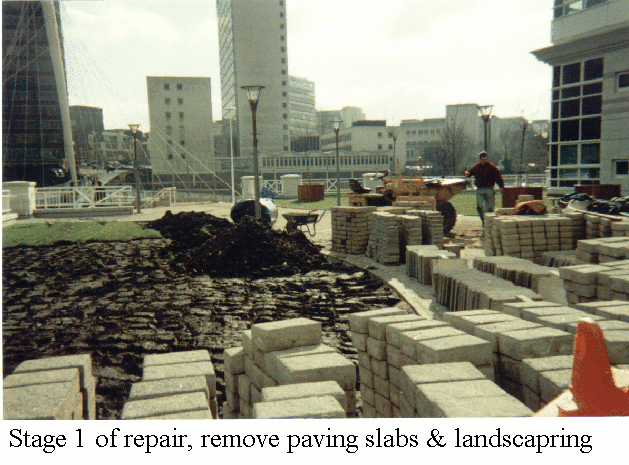
Think of the hollow-leg syndrome, for example in relation to a concrete tunnel under the sea. Water by capillary absorption is sucked through the concrete to the inner face where the water evaporates so enabling a constant flow of water through the concrete, which may be worsened by wind and warm air in the tunnel caused by traffic or trains. So the water evaporates but what does it leave behind? The concentration of salt slowly builds up until the level at the inner reinforcement is such that the alkaline protective coating around the rebar is destroyed and corrosion begins. Why has less than 1% under this test been suggested? Well, ordinary good quality dry concrete absorbs about 2.5% to 3% of its weight in water in 30 minutes, so for a waterproofing product, I would suggest over 1%, that’s a 67% improvement, could hardly be considered waterproof.
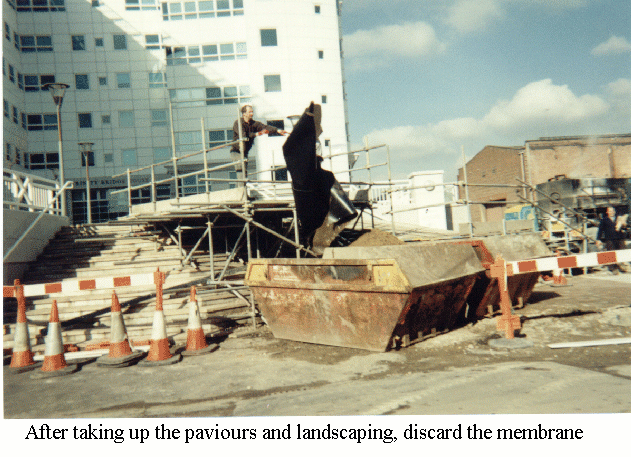
The second test criteria here relates to the BSEN934:2 requirement for the sample containing the admixture to absorb less than 60% of the control when cured for 90 days and tested for 28 days. This test simply relates to the total volume of water that the specimen will absorb, so if you make the concrete a little denser then the volume of pores and capillaries will be slightly lower and the sample will thus absorb less water. As such, many high range water-reducing superplasticisers will meet this BSEN934:2 requirement!
However, as was explained in the first article in January, if you densify the concrete, the pores and capillaries become straighter and finer. When this happens, the capillary suction increases so that water will pass through the concrete more quickly. Thus, densifying the concrete alone, far from making it more durable actually makes it less durable! Why has the requirement been stated as less than 25% of control? Well, a good superplasticiser can easily achieve 50%, so for a waterproofing admixture to be worth anything, it should be at least half this figure, I would suggest.
Point 4 is obvious but how do you know the admixture won’t leach out of the concrete over time? After all, we know that penetrating coatings to concrete in aggressive environments need regular replacement, eg silane, and we were led to believe that membranes would last forever but now we know different. Note that many products sold as waterproofing admixtures have no long-term track record at all to prove longevity.
Point 5 is an interesting one. If you don’t do this, how do know that the waterproofing admixture is actually in the concrete and how do you know where the waterproof concrete has actually been placed? Where a performance specification has not been given, specifiers should be very careful not to agree to a change of specified product where another authority has issued a warning regarding the use of that product – for example, Dubai Municipality’s Circular 213 issued in 2016 to all developers, specifiers and contractors, restricting use of so-called “crystal-growth” waterproofing additives.
As mentioned in the first article, the 2009 revision of BS8102 did not, unfortunately, define ‘waterproof concrete’, but it does make three very important points as regards the waterproofing of below ground structures: Buildability, Repairability and Sustainability.
If the design or installation requirements of a waterproofing product are difficult or convoluted then by definition it has a high chance of failure. So simplicity and ease of use are very important to a successful outcome.
Likewise, if repair is difficult or impossible, you are relying on 100% perfect installation or the cost of that waterproofing is worthless. Ease or simplicity of repair is a great asset.
As to sustainability, being able to reuse the material after demolition, as opposed to filling up landfill, is becoming very important in our shrinking world but, perhaps more importantly, ensuring our structures last for their intended design life with little or no maintenance, repair or the requirement for premature demolition in the first place is vital.
In the third article to appear in July, I will comment on the many different test methods that are seen in specifications, many of which have little relevance to what actually happens in practice.
James McDonald
General Manager
Cementaid
Tel: +44 (0)1293 653 900


